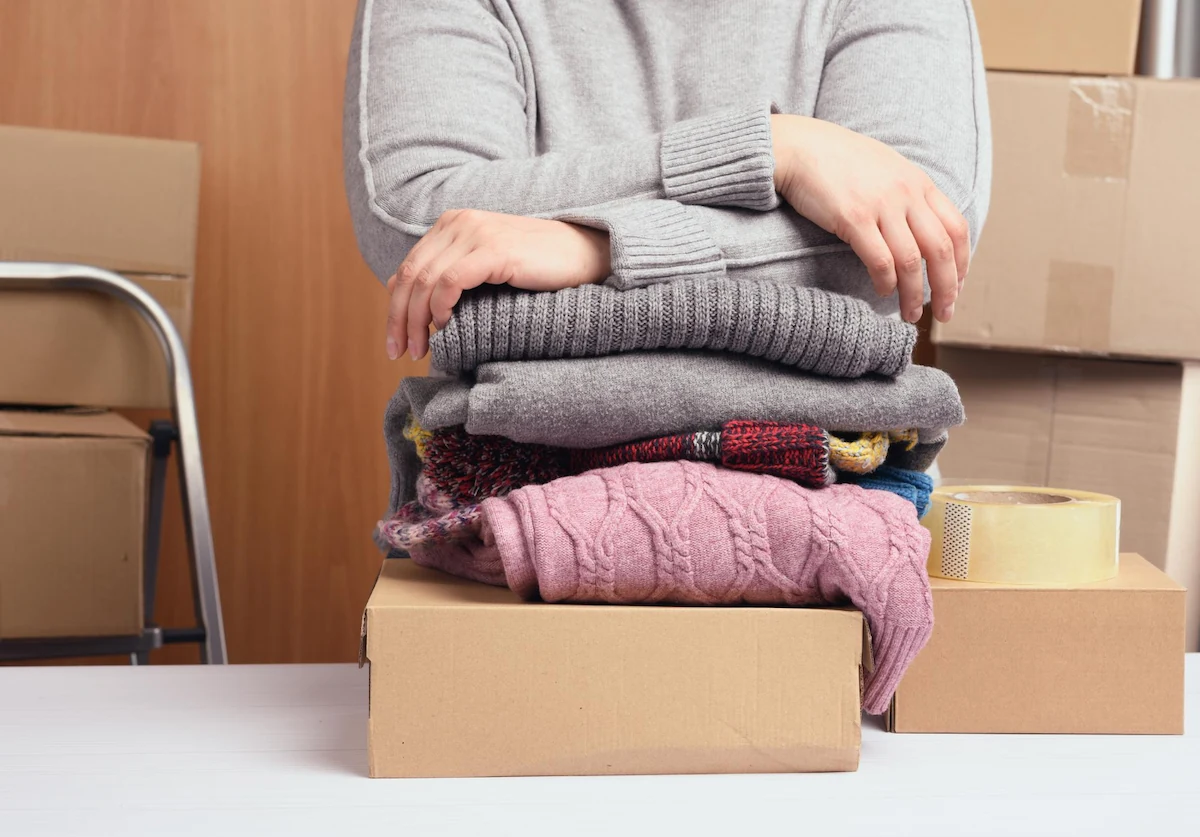Table of Contents
Decluttering clothes can be a beneficial and productive activity you can do at home. When your wardrobe is already full, this is the right time to start. In addition to setting up your wardrobe, this activity also supports the environment.
The Ministry of Environment and Forestry in 2021 noted that Indonesia produces 2.3 million tons of clothing waste every year, equivalent to 12% of total household waste.
By decluttering clothes, you can dispose of or recycle unused clothes. To figure out how to do it, read the explanation below!
How to Declutter Clothes
There are some steps you must take to declutter clothes, from bringing all of your clothes out and stop being FOMO. These steps are also part of a sustainable lifestyle, where you are wiser in choosing and managing the clothes you have. Here is a complete explanation.
1. Take All Your Clothes Out

Taking your clothes out will help you declutter them and realize that you already have many clothes. Make sure that you keep your clothes tidy to make it easier to declutter. In this stage, you will know how many clothes you have and rarely use.
2. Separate Clothes into Several Categories

Now that your clothes are already out, you can divide them into three categories to make them organized. The first category is the clothes you cannot or do not want to use. Clothes in this category can be donated to the orphanage or people in need.
The second category is wearable clothes that still have a selling value, especially if they follow current fashion trends. You can sell them as preloved through social media or e-commerce.
The third one is the clothes you still want to use, but need a small repair. By separating them into three categories, your clothes will still have value and not be wasted.
Read also: A Guide to Environmental Organizations, Why Crucial?
3. Save Memory
The most difficult part of decluttering clothes is letting them go. Many of us struggle with parting from clothes because of the memories attached to them. However, this must be overcome to keep the decluttering process on track.
One tip you can try is to hold the clothes, feel the touch, and say thank you. If you do not feel happy or “spark joy” when you hold it, it is a sign that the clothes do not need to be kept anymore.
4. Fold and Store

It is important to fold your clothes properly. You can fold them tidily to save more space and stack them based on the types to make them more organized.
Some clothes, such as jackets, outers, dresses, and shirts are better hung than folded, then you can fold the rest. For underwear, you can store it in the drawer.
5. Stop Being FOMO

For some people, decluttering clothes can be challenging. Limited time, insufficient storage space, or difficulty in letting go of certain items of clothing often become challenges.
That’s why you can try to keep yourself from impulsively shopping for more new clothes that you do not need. Avoid shopping just because you want to follow the latest fashion trends because this will make your wardrobe full without clear purposes.
How to Benefit from Your Unused Clothes
Many ways to benefit from your unused clothes you can do as a part of sustainable living. You can try upcycling, which is changing old clothes into new, useful items or making them into clothes with different designs. Here is a full explanation:
1. Clothes Upcycling

One of the best ways to reuse unused clothes is by transforming them into decorative and valuable items. For example, you can turn old shirts into pillows or shopping bags. Additionally, the unused dress can be used as quilting material to make a pillowcase or blankets.
The ideas for upcycling old clothes are almost endless. You can be creative according to your imagination and see what can be created from those old clothes. Interesting, isn’t it?
Read also: The Youth Must Care About the Environment
2. Donate or Sell the Clothes

If your used clothes are still in good condition but you cannot wear them anymore, you can donate or sell them. Many charity organizations or secondhand shops are willing to receive donated clothes that later can be worn by those in need.
Besides, you can sell your clothes online through e-commerce or social media to get additional income and let your clothes be functional in others’ hands.
3. Transform Clothes to Accessories

The next step in decluttering clothes is turning worn clothes into interesting and unique accessories. For example, you can use pieces of fabric from old dresses to make accessories, such as necklaces, bracelets, or earrings.
You can also make bags or shoe charms with old dresses. With a bit of creativity and sewing skills, you can create unique and stylish accessories from unused old clothes.
4. Turn Clothes to New Ones

If you have sewing skills, you can try transforming worn clothes into attractive new clothes. For example, you can cut and resew your old dress to be a new top or skirt. You can also turn your old shirt into comfy pajamas.
With a little creativity and basic sewing skills, you can create unique new clothes and customize them to your desired style.
Those are the information about decluttering clothes and how to benefit from it. With this simple step, you not only make your wardrobe tidier but also contribute to reducing clothes waste.
To start a small step with a big impact on the environment, you can join Aksi Asri. This action helps you recycle and reuse your stuff to prevent it from becoming waste.
That way, you can support a more eco-friendly lifestyle. Register yourself as Warga Asri with Indonesia Asri now and let’s make a greener Indonesia!
Read also: 3 Simple Steps to Combat Climate Change








